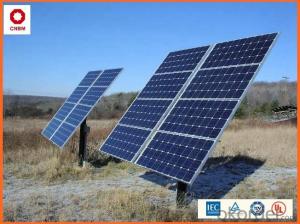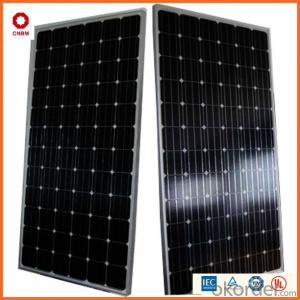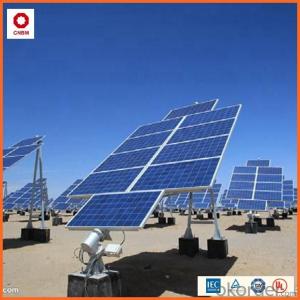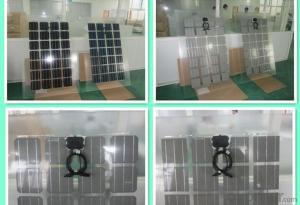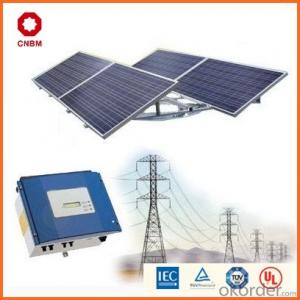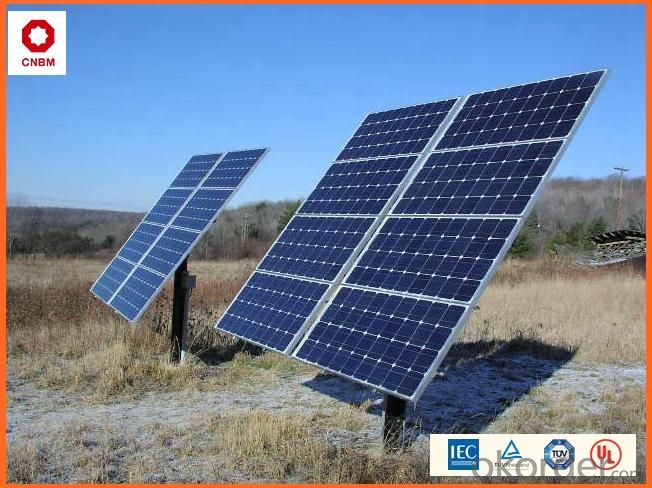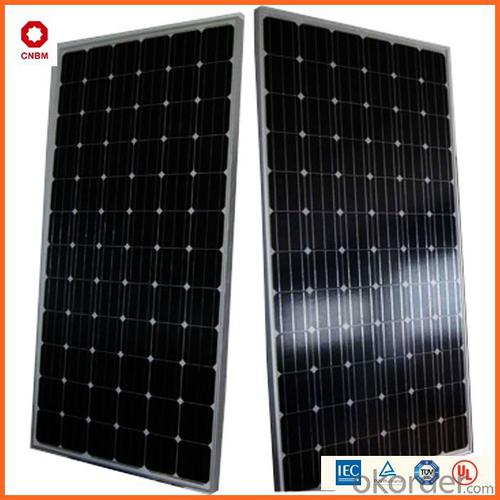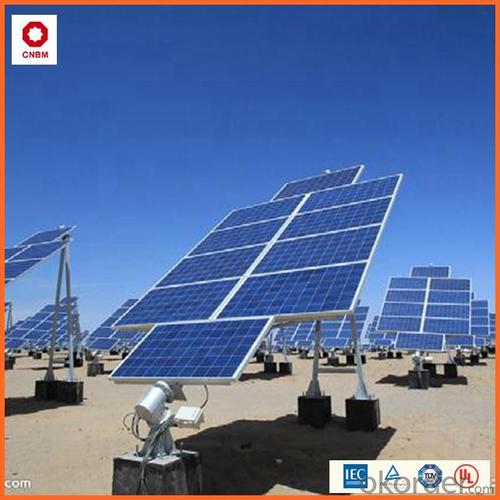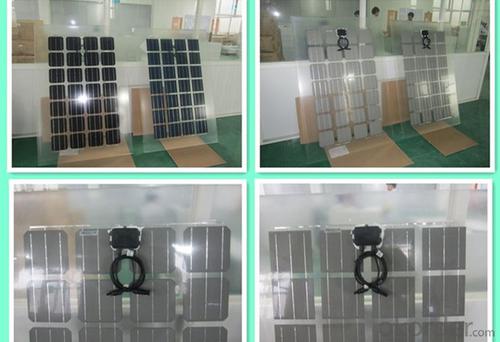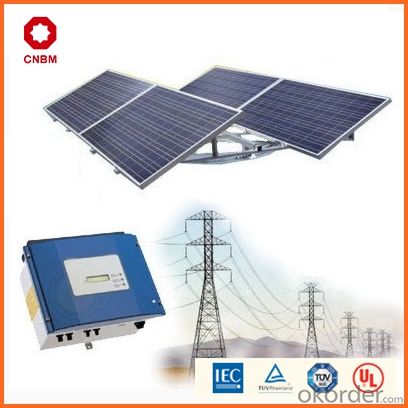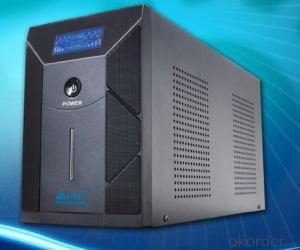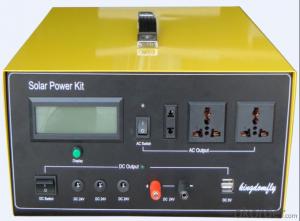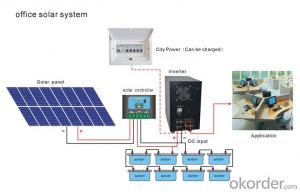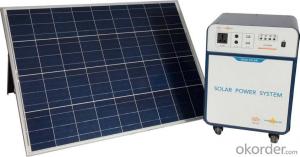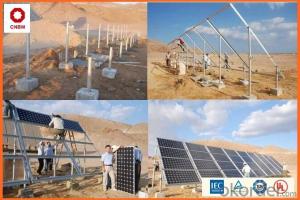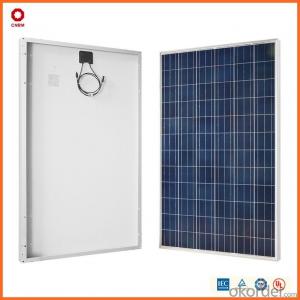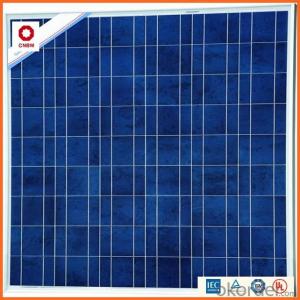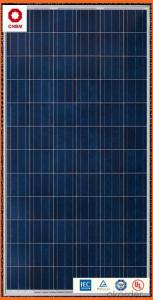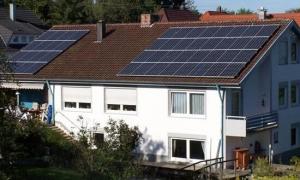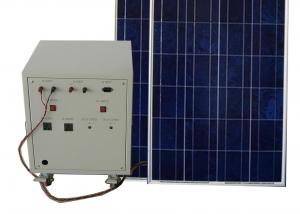90w Small Solar Panels for Home Solar Energy Systems - In Stock China Manufacturer
- Loading Port:
- China main port
- Payment Terms:
- TT OR LC
- Min Order Qty:
- 1 watt
- Supply Capability:
- 10000000 watt/month
OKorder Service Pledge
OKorder Financial Service
You Might Also Like
Specification
Product Description:
Hot Sale !!! Quality and Safety of Small Poly Solar Panel 5w~150w
1. Rigorous quality control meets the highest international standards.
2. High-transmissivity low-iron tempered glass, strong aluminium frame.
3. Using UV-resistant silicon.
4. IS09001/14001/CE/TUV/UL
Warranties of Small Poly Solar Panel 35~85w
1. 10 years limited product warranty
2. 15 years at 90% of the minimal rated power output
3. 25 years at 80% of the minimal rated power output
Specification
Characteristics of Poly solar panels CNBM (245-320W) | |||||
Max Power Voltage Vmp(V) | 30.3 | 30.8 | 31.1 | 31.4 | 31.85 |
Max Power Current Imp(A) | 7.60 | 7.64 | 7.73 | 7.81 | 7.85 |
Open Circuit Voltage Voc(V) | 36.1 | 36.6 | 37 | 37.3 | 37.68 |
Short Circuit Current Isc(A) | 8.50 | 8.55 | 8.65 | 8.75 | 8.85 |
Max Power Pm(W) | 230W | 235W | 240W | 245W | 250W |
Temperature Coefficient of Cells Poly solar panels CNBM (245-320W) | |
NOCT | 45± 2 |
Temperature Coeffucients of Isc | 0.0492 |
Temperature Coeffucients of Voc | -0.3374 |
Temperature Coeffucients of Voc | -0.4677 |
Mechanical Data of Poly solar panels CNBM (245-320W) | |
Dimension | 1638 × 982 × 40 mm |
Weight | 19.5 kg |
No. of Cells and Connections | 60 (6 ×10) |
Tolerance | 0 ~ + 5 W |
Cell | Monocrystalline Cell 156 × 156 mm |
Packing | 624 Pcs/40ft(H) Container |
Limits of Poly solar panels CNBM (245-320W) | |
Operating Temperature | -40 to +85 |
Storage Temperature | -40 to +85 |
Max System Voltage | 1000VDC(IEC) / 600VDC(UL) |
Features of our products:
• High conversion efficiency mono/poly-crystalline amorphous silicon solar cells
• Modules incorporate high performance bypass diodes to minimize the power drop caused by shading
• High transmittance, low-iron tempered glass
• High performance EVA encapsulant to prevent destroying and water.
• AI frame: without screw, corner connection. 8 holes on the frame can be installed easily
• Good performance of preventing from atrocious weather such as wind and hails
• Certifications: CE IEC TUV VDE UL, Class I
• 10 years 90% power output warranty
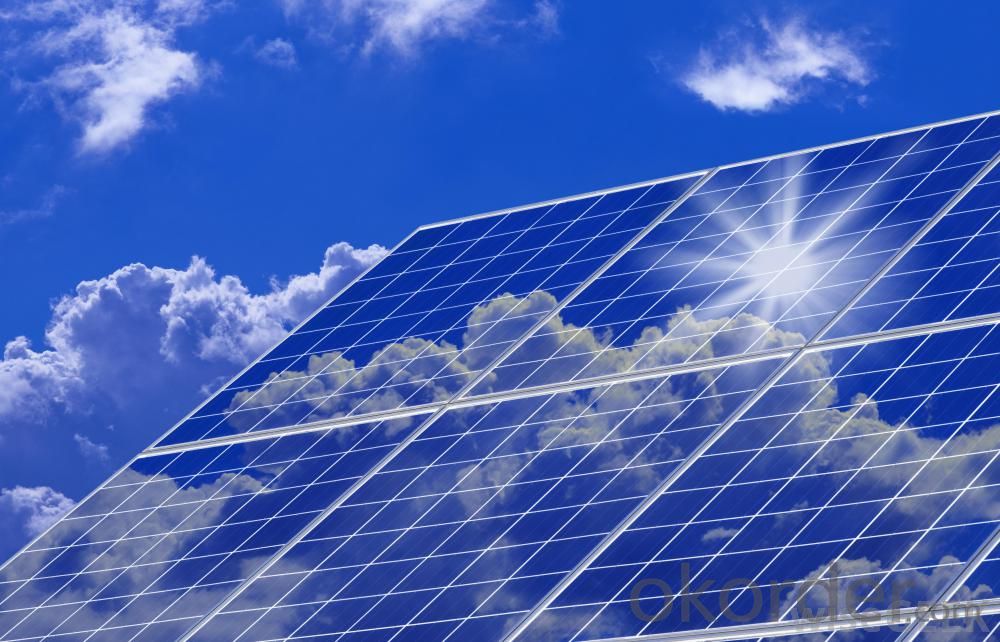
Shipping of Small Poly Solar Panel 35~85w
By Sea | Delivery from Shanghai or Ningbo seaport |
By Air | Departure from Shanghai Pudong Airport |
By Express | Post by DHL, EMS, UPS, TNT. |
Features of our products:
• High conversion efficiency mono/poly-crystalline amorphous silicon solar cells
• Modules incorporate high performance bypass diodes to minimize the power drop caused by shading
• High transmittance, low-iron tempered glass
• High performance EVA encapsulant to prevent destroying and water.
• AI frame: without screw, corner connection. 8 holes on the frame can be installed easily
• Good performance of preventing from atrocious weather such as wind and hails
• Certifications: CE IEC TUV VDE UL, Class I
• 10 years 90% power output warranty
As a professional Solar Panel manufacturer and Supplier in China, we have our customers come around the whole world and our specialization has got a worldwide recognition. Meanwhile, with our superior quality, competitive price, prompt and excellent service, As main role in trade section of CNBM Group, CNBM International Corporation supplies products including Monocrystalline Solar Panel, Polycrystalline Solar Panel ( multicrystalline silicon Solar Panel) have received and enjoyed famous reputation in many countries and regions in the world.
- Q: What are the different types of solar energy systems?
- There are primarily three types of solar energy systems: photovoltaic (PV) systems, solar thermal systems, and concentrated solar power (CSP) systems. PV systems use solar panels to convert sunlight directly into electricity, while solar thermal systems use sunlight to heat water or air for various purposes such as heating buildings or generating electricity. CSP systems, on the other hand, concentrate sunlight using mirrors or lenses to produce steam, which drives a turbine to generate electricity.
- Q: Can solar energy systems work during cloudy or rainy days?
- Solar energy systems can still work during cloudy or rainy days, although their efficiency may be reduced. While direct sunlight is the most effective way to generate solar energy, even diffused sunlight on cloudy or rainy days can still produce a certain amount of electricity.
- Q: Can solar energy systems be used for powering electric vehicle car-sharing programs?
- Yes, solar energy systems can be used for powering electric vehicle car-sharing programs. Solar panels can be installed on the rooftops of car-sharing stations or nearby buildings to generate clean and renewable energy. The energy harvested from these solar panels can then be used to charge the electric vehicles in the car-sharing program. By utilizing solar energy, car-sharing programs can significantly reduce their carbon footprint and reliance on fossil fuels. Additionally, solar-powered car-sharing programs can benefit from lower operating costs as they are not dependent on electricity from the grid, which can be expensive and subject to price fluctuations. Overall, integrating solar energy systems into electric vehicle car-sharing programs is a sustainable and environmentally friendly solution.
- Q: Can solar energy systems be used in areas with limited access to solar surge protection devices?
- Yes, solar energy systems can still be used in areas with limited access to solar surge protection devices. While surge protection devices are recommended to protect solar panels and equipment from sudden voltage spikes, their absence does not render the entire system unusable. Other protective measures, such as grounding the solar installation, using appropriate circuit breakers, and employing surge protection at the building's electrical panel can still help mitigate potential risks. Additionally, regular maintenance and monitoring of the system can help identify and address any potential issues.
- Q: Can a solar energy system power an entire home?
- Yes, a solar energy system can power an entire home. With the right size and capacity, a solar energy system can generate enough electricity to meet the energy needs of a household, including powering appliances, heating and cooling systems, lighting, and other electrical devices. However, factors such as the home's energy consumption, the size and efficiency of the solar system, and the availability of sunlight can affect its ability to fully power the home at all times.
- Q: Can solar energy systems be installed on industrial facilities?
- Yes, solar energy systems can be installed on industrial facilities. In fact, many industrial facilities have already adopted solar energy as a viable and sustainable source of power. These systems can significantly reduce energy costs, decrease reliance on fossil fuels, and contribute to a greener and more sustainable future for industrial operations.
- Q: Can solar energy systems be used in areas with high levels of bird activity?
- Yes, solar energy systems can be used in areas with high levels of bird activity. However, precautions should be taken to minimize any potential negative impact on birds. This can be achieved by implementing bird-friendly designs and techniques such as using mesh screens or netting, angling solar panels to reduce reflection, and avoiding installation near nesting sites or migration routes. Regular monitoring and maintenance can also help identify and address any issues that may arise.
- Q: Can solar energy be used for heating?
- Yes, solar energy can be used for heating. Solar thermal systems can collect and convert sunlight into heat energy, which can then be used for heating water, homes, or other applications.
- Q: What is the impact of roof color on the performance of solar panels?
- The performance of solar panels can be significantly affected by the color of the roof, although it mainly depends on the type of solar panel technology being used. The color of the roof can have an impact on the overall efficiency and output of solar panels due to its influence on sunlight temperature and reflection. Solar radiation absorption and reflection are influenced by roof color. Dark-colored roofs tend to absorb more sunlight, resulting in increased heat accumulation on the roof's surface. This excess heat negatively affects the performance of solar panels, as they function less efficiently at higher temperatures. The elevated temperature can lead to a decrease in the overall power output of the panels, reducing their energy generation potential. On the contrary, light-colored roofs reflect more sunlight, which helps prevent excessive heat buildup. By reflecting a significant amount of solar radiation, the roof's color assists in keeping the panels cooler and maintaining their optimal operating temperature. This can lead to better performance and higher energy production from the solar panels. However, it is important to note that the impact of roof color can vary depending on the type of solar panel technology used. Certain types of solar panels, such as monocrystalline or polycrystalline, may be more sensitive to temperature changes and therefore more influenced by roof color. In contrast, thin-film solar panels are generally less affected by temperature variations, making the impact of roof color less significant in their case. Furthermore, factors like climate, local weather conditions, and the orientation and tilt of the solar panels can also have a greater impact on their performance than the roof color alone. Proper installation and maintenance of the solar panel system, including adequate ventilation and shading, can further mitigate the impact of roof color on panel performance. In conclusion, while roof color can affect the performance of solar panels, it is just one of many factors that can influence their efficiency and energy production. To maximize the performance of solar panels, regardless of the roof color, it is essential to consider the specific type of solar panel technology, local environmental conditions, and proper installation practices.
- Q: Can solar energy systems be installed on flat roofs?
- Yes, solar energy systems can be installed on flat roofs. However, the installation process and design considerations may be different compared to pitched or sloped roofs.
Send your message to us
90w Small Solar Panels for Home Solar Energy Systems - In Stock China Manufacturer
- Loading Port:
- China main port
- Payment Terms:
- TT OR LC
- Min Order Qty:
- 1 watt
- Supply Capability:
- 10000000 watt/month
OKorder Service Pledge
OKorder Financial Service
Similar products
Hot products
Hot Searches
Related keywords
